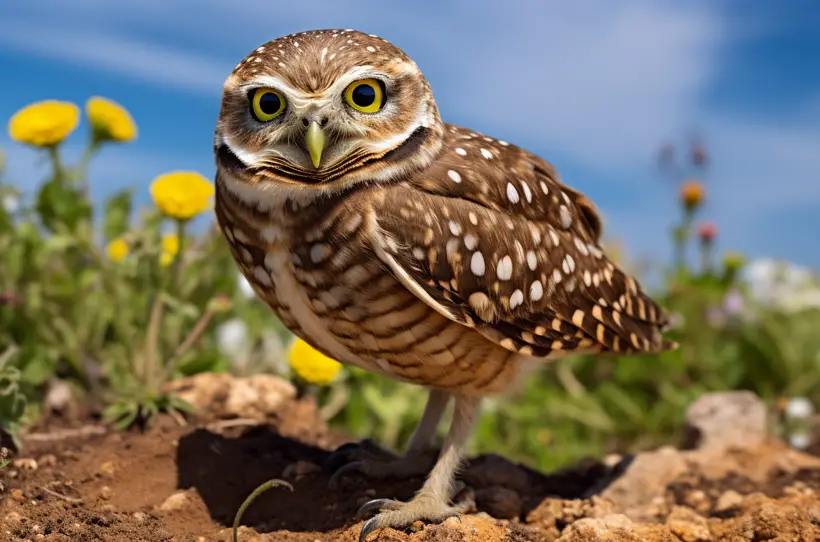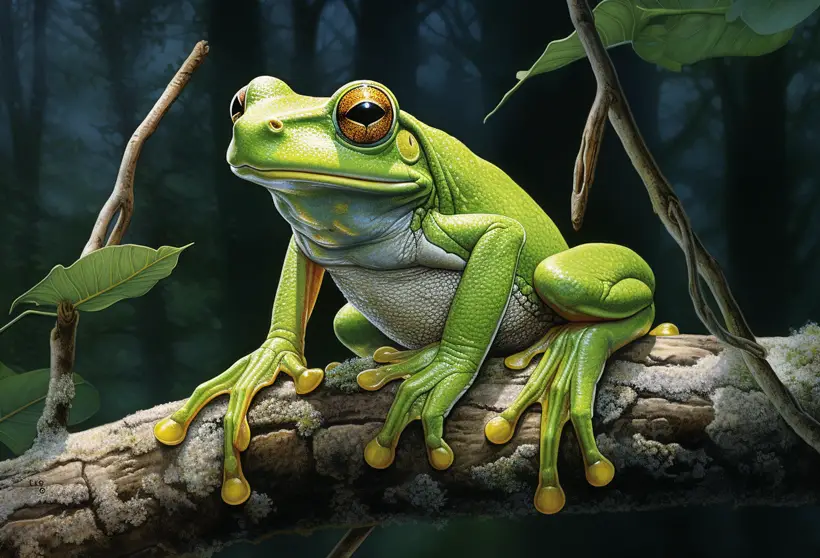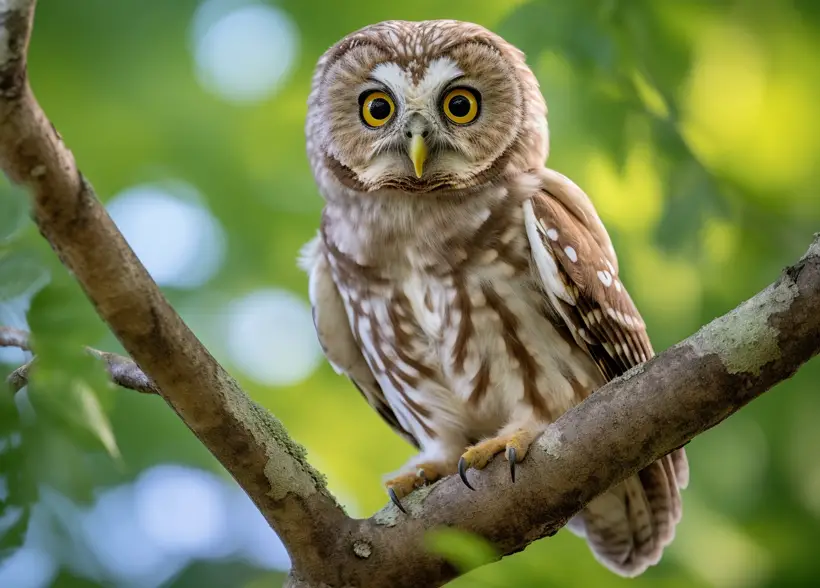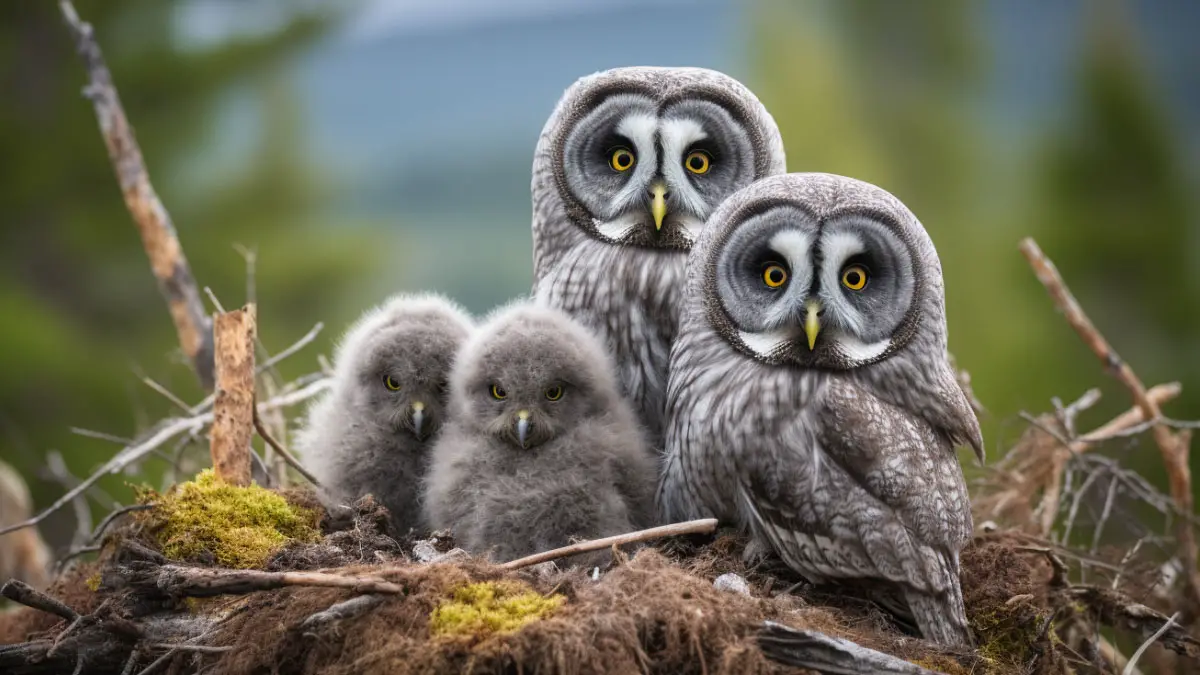If you’ve ever wondered about whether owls eat frogs, you’re not alone. This particular inquiry has stirred the curiosity of wildlife enthusiasts and birdwatching aficionados alike. Today, we’ll delve into the relationship between owls and frogs.
So, do owls eat frogs? Yes, owls do eat frogs. They are opportunistic feeders who occasionally consume frogs in addition to small mammals and birds. However, the extent to which owls incorporate frogs into their diet varies between species. It is also influenced by various factors such as seasonality, habitat, and individual owl preferences.
Understanding the relationship between these two creatures can help us appreciate their role in the ecosystem. This article will examine this relationship and how owls are adapted to hunting frogs, among other related topics.
Do Owls Eat Frogs?
Yes, owls do eat frogs. Their diet is not limited to small mammals and birds; they are opportunistic feeders that occasionally include frogs among their culinary choices. However, as mentioned, the extent to which owls incorporate frogs into their diet varies among different owl species.

Some of the owl species that consume frogs are:
1. Eastern Screech Owl (Megascops asio)
The Eastern Screech Owl is a small owl species native to North America. These owls are known to have a particular fondness for frogs, especially during the breeding season when they are more active.
The Eastern Screech Owls adaptable diet allows them to take advantage of the increased availability of frogs during this time. Their small size and agile nature enable them to capture these elusive amphibians.
Here is a video for a clear understanding.
2. Eurasian Eagle Owl (Bubo bubo)
The Eurasian Eagle Owl is one of the world’s largest owl species, inhabiting parts of Europe and Asia. These magnificent birds are known to eat the European Common Frog (Rana temporaria).

3. Great Horned Owl (Bubo virginianus)
The Great Horned Owl, often referred to as the “Tiger of the Sky” due to its hunting prowess, is another owl species that consumes frogs. Their broad diet includes various small mammals, birds, and amphibians, with frogs being one of their preferred amphibious targets.
These owls are widespread across North and South America. This gives them access to a wide range of frog species, like the Northern Leopard Frog (Lithobates pipiens).

4. Barred Owl (Strix varia)
The Barred Owl is a common owl in North America, distinguished by its distinctive hooting call. While not exclusively focusing on frogs, Barred Owls have been observed preying on frogs, particularly in frog-rich areas.

5. Burrowing Owl (Athene cunicularia)
The Burrowing Owl is unique among owl species as it is diurnal, meaning it is active during the day. These small owls are primarily insectivorous but are known to be opportunistic hunters if circumstances deem necessary.
In areas where frogs are part of the local fauna, Burrowing Owls will occasionally include frogs in their diet. Their ground-dwelling nature and burrow-digging behavior provide them with opportunities to encounter and capture frogs.

Frog Species Commonly Eaten By Owls And Their Geographical Distribution
Owls can be found on nearly every continent, and their choice of frog prey can vary depending on their location. Some of the frog species commonly consumed by owls include:
American Green Tree Frog (Hyla cinerea)
The American Green Tree Frog is a small, arboreal species found in the eastern regions of the United States. These frogs are known for their vibrant green coloration and are often on the menu for Eastern Screech Owls. As tree-dwelling frogs, they are more accessible to owls that hunt in wooded areas.

European Common Frog (Rana temporaria)
The European Common Frog, as its name suggests, is widespread across Europe and parts of Asia. These frogs are commonly consumed by Eurasian Eagle Owls, which are known for their preference for larger prey. The abundance of these frogs in their range makes them a viable food source.

Northern Leopard Frog (Lithobates pipiens)
The Northern Leopard Frog is native to North America and is found in various wetland habitats. These frogs are often targeted by Great Horned Owls.

Barred Owlet (Sclerophrys pusilla)
In Sub-Saharan Africa, the African Grass Owl is known to feed on Barred Owlet, a small species of frog. These owls inhabit grasslands and marshes, where they encounter these frogs.

Common Asian Toad (Duttaphrynus melanostictus):
The Oriental Scops Owl, found in South and Southeast Asia, occasionally includes the Common Asian Toad in its diet.

Factors Affecting Owls’ Predation On Frogs
Here are the various factors that influence owls’ predation on frogs:

1. Seasonality
Frogs are more active during specific seasons, especially during breeding season. This increased activity makes them more accessible to owls. Owls are opportunistic hunters who take advantage of the abundance of frogs during these times.
2. Availability of Alternative Prey
If owls have access to an abundance of alternative prey, such as small mammals, birds, or insects, they may be less inclined to actively seek out frogs. Conversely, when other prey is scarce or less accessible, owls may turn to frogs as a convenient and available food source.
3. Habitat
The prey of owls is closely related to their environment. Owls that live in wetland areas or areas with a lot of water are more likely to encounter and prey on frogs. Wetlands are abundant in amphibian biodiversity, providing owls with a consistent food source. Additionally, arboreal owls prefer tree-dwelling frogs in wooded habitats.
4. Frog Species Abundance
If a particular frog species is abundant in an area, owls are more likely to include them in their diet. Abundance can be influenced by factors like climate, ecosystem health, and breeding success.
Adaptation For Capturing Frogs And Hunting Techniques
Owls have evolved physical and behavioral adaptations that allow them to capture frogs effectively. These are some examples:

1. Silent Flight
Owls are renowned for their ability to fly silently, thanks to specialized wing feathers and a unique wing structure. These adaptations reduce turbulence and noise during flight, allowing owls to approach their prey stealthily.
2. Excellent Night Vision
Owls have extremely large eyes in comparison to their body size. These large eyes are adapted to low-light conditions, making them extremely effective night hunters. Frogs are often most active at night, and owls’ enhanced night vision allows them to spot frogs in the dark, even in dim moonlight.
3. Sharp Talons and Beak
Owls have powerful talons and a sharp, curved beak. Owls use their sharp talons to secure and immobilize frogs when hunting. Their beak aids in tearing and consuming prey after capture.
4. Hunting Technique for Capturing Frogs
Owls are well known for their sit-and-wait hunting strategy, also known as “perch-and-pounce.” Owls typically perch in trees or on elevated vantage points near bodies of water, wetlands, or other frog habitats when searching for frogs.
Owls patiently observe their surroundings from concealed positions, waiting for frog movement.
Impact Of Frog Consumption On The Ecosystem
Here are the major effects of owls eating frogs and how these interactions reverberate throughout their respective ecosystems.

1. Natural Population Control
Natural population control is one of the most important ecological roles of owls that consume frogs. Owls help regulate frog populations by preying on them. This control prevents frog overpopulation, which, if unchecked, could lead to resource depletion and habitat degradation.
2. Trophic Cascade Effects
The presence of owls in an ecosystem can cause a trophic cascade. This is a phenomenon in which changes in one species’ population have ripple effects throughout the food web. Reduced frog populations, for example, may cause insect populations to rise, resulting in altered predator-prey interactions.
3. Nutrient Cycling
When owls eat frogs, they absorb the nutrients in the frogs. When these owls defecate or regurgitate indigestible parts, they return these nutrients to the ecosystem. This nutrient cycling can improve soil fertility and promote vegetation growth in the owl’s habitat.
FAQs
Here are related questions shedding light on various aspects of owls’ predation on frogs.
Owls primarily hunt live prey. While they may scavenge on occasion, their hunting strategy is based on capturing active prey. As a result, they prefer to eat live frogs rather than dead ones.
Owls typically consume frogs by swallowing them whole. After capturing a frog, they use their sharp beaks to tear the prey into smaller, more manageable pieces. Owls then swallow these pieces, and indigestible parts, such as bones, are regurgitated as pellets.
Frogs have evolved several strategies to evade owl predation. Their primary defense is camouflage, as many frogs have coloration and patterns that help them blend into their surroundings, making them less visible to owls.
Additionally, some frog species have developed warning calls or toxic skin secretions to deter potential predators, including owls.
Conclusion
Owls do indeed eat frogs as part of their diet. While not their primary food source, frogs are a valuable nutritional resource that owls take advantage of when the opportunity arises. Examining the dietary habits of owls provides a valuable window into nature’s complex web of ecosystems.
So, next time you hear the haunting hoot of an owl at night, tell yourself they might be going for a slimy, froggy feast. It’s either for nutrition or just to hunt.








